Date: March 4-5, 2024
Location: Online via Zoom
Workshop Organizers: Brad Aagaard, Marine Denolle, Eric Fielding, Evan Hirakawa, Tran Huynh, Lorraine Hwang, Scott Marshall, Sarah Minson, Laurent Montesi, Arben Pitarka, Judy Zachariasen
With funding from NSF, USGS and other sponsors, the Southern California Earthquake Center transitioned to become the Statewide California Earthquake Center (SCEC) in 2024. This created exciting research and collaboration opportunities that span the entire transform plate boundary, encompassing the Pacific and North American Plates from western Nevada to Baja California and Cape Mendocino.
SCEC, USGS, CGS, NASA, LLNL, CIG, and other academic partners hosted the California Community Earth Models for Seismic Hazard Assessments Workshop online on March 4–5, 2024, with more than 200 participants over two days. The workshop aimed to foster collaboration and establish a strong community around developing and maintaining community Earth models for California. These models describe the state of the Earth’s crust and upper mantle, including features like faults, elastic properties, and stress, which are crucial for understanding earthquake processes. The workshop emphasized the importance of “community” in these models, meaning they are publicly accessible and regularly updated through ongoing collaboration with the scientific community. Community Earth Models (CEMs) are critical inputs for various earthquake hazard assessment studies. Several organizations, such as the Statewide California Earthquake Center (SCEC), the U.S. Geological Survey (USGS), and the Cascadia Regional Earthquake Science Center (CRESCENT), are creating models that cover various regions of California. This workshop marks a crucial step toward building a collaborative and sustainable framework for developing and utilizing community Earth models for the entire state of California.
WORKSHOP OBJECTIVES. The workshop objectives were to
WORKSHOP REPORT. The workshop report summarizes key points from the presentations and discussions. It highlights three use cases driving the development of community Earth models, presents an inventory of existing community Earth models in California, summarizes techniques for integrating and merging models, discusses potential connections with the Cascadia Region Earthquake Science Center (CRESCENT), and explores the concept of “community” in community Earth models.
KEY POINTS & RECOMMENDATIONS. Below are the key points from the workshop presentations and discussions. See the workshop report for detailed recommendations and outcomes.
Presentation slides may be downloaded by clicking the links following the title. PLEASE NOTE: Files are the author’s property. They may contain unpublished or preliminary information and should only be used while viewing the talk. Only the presentations for which SCEC has received permission to post publicly are included below.
| 08:00 - 08:15 | Introduction (PDF, 1.8MB) | Brad Aagaard |
| Use cases for California community models | ||
| 08:15 - 08:35 | What scientific questions could we address with statewide community models? | Alice Gabriel |
| 08:35 - 08:45 | Discussion | |
| 08:45 - 09:05 | How could statewide community models improve seismic hazard assessments? | Christine Goulet |
| 09:05 - 09:15 | Discussion | |
| 09:15 - 09:35 | How could carbon sequestration in California use community models? (PDF, 3.2MB) | Dan Boyd |
| 09:35 - 09:45 | Discussion | |
| 09:45 - 10:00 | Break | |
| Overview and inventory of existing community models | ||
| 10:00 - 10:10 | Geologic models (PDF, 4.9MB) | Russ Graymer / Mike Oskin |
| 10:10 - 10:20 | Fault models (PDF, 6.4MB) | Scott Marshall / Alex Hatem |
| 10:20 - 10:30 | Rheology and thermal models (PDF, 9.0MB) | Laurent Montesi / Wayne Thatcher |
| 10:30 - 10:40 | Stress models (PDF, 2.7MB) | Jeanne Hardebeck / Karen Luttrell |
| 10:40 - 10:50 | Seismic velocity models | Evan Hirakawa / Brad Aagaard |
| 10:50 - 11:00 | Geodetic models (PDF, 2.7MB) | |
| 11:00 - 11:30 | Discussion | |
| 11:30 | Adjourn until tomorrow |
| 08:00 - 08:20 | Community models in the Cascadia Region Earthquake Science Center (CRESCENT) (PDF, 3.2MB) | Amanda Thomas |
| 08:20 - 08:30 | Discussion | |
| 08:30 - 08:45 | Breakouts: What does “community” in “community models” mean?
|
All participants, are assigned and divided into the 13 Breakout Groups listed below. |
| 08:45 - 09:15 | Breakout Group Reports (1 slide each, 2-minutes per group) | Breakout Group Leaders |
| 09:15 - 09:30 | Break | |
| Techniques for integrating and embedding models | ||
| 09:30 - 09:40 | Data integration: Geodetic models from GNSS + InSAR (PDF, 1.9MB) | Mike Floyd / Katia Tymofyeyeva |
| 09:40 - 09:50 | Seamless embedding of seismic velocity models via integrated geologic models (PDF, 3.1MB) | Brad Aagaard |
| 09:50 - 10:00 | Embedding high resolution models in regional models using blending (PDF, 2.5MB) | Patricia Persaud |
| 10:00 - 10:10 | Embedding high resolution models in regional models using machine learning (PDF, 6.0MB) | Yehuda Ben-Zion |
| 10:10 - 10:20 | Discussion | |
| 10:20 - 10:40 | Plenary discussion: Incentives for participating in community models | |
| 10:40 - 11:00 | Wrap-up discussion: Looking ahead | |
| 11:00 | Adjourn |
CEMs are collaborative platforms featuring community-contributed data, models, and tools for earthquake system analysis. They enable 3D visualization, data exploration, sharing, and integrated modeling.
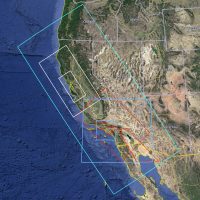
Unified Community Velocity Model (UCVM)
seismic velocities for several California regions
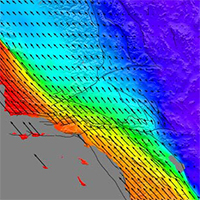
Community Geodetic Model (CGM) Explorer
Earth surface displacement from GNSS and InSAR
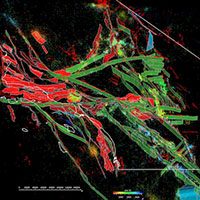
Community Fault Model (CFM) Explorer
3D geometric representations of faults in California
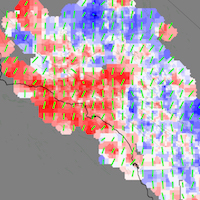
Community Stress Model (CSM) Explorer
suite of models of stress and stressing rate
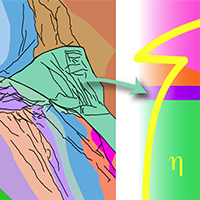
Community Rheology Model (CRM) Viewer
3D ductile rheology of lithosphere in S. California
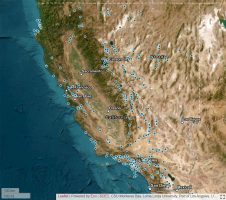
Geologic Slip Rate Database (GSRD)
geologic slip rates for CA, NV, and northern Mexico
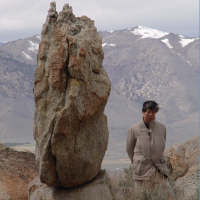
Precariously Balanced Rock (PBR) Database
field-derived data for PBRs in California
SCEC’s CEM leader Scott Marshall (Appalachian State) presents an overview of California Community Earth Models at the 2024 SCEC Annual Meeting
The Statewide California Earthquake Center (SCEC) fosters a diverse and inclusive community where everyone feels safe, productive, and welcome. We expect all participants in SCEC-supported events to uphold this commitment by adhering to the SCEC Activities Code of Conduct.
The SCEC Annual Meeting brings together 400-500 participants worldwide to share breakthroughs, assess progress, and chart a collaborative path for earthquake science. All of the Center activities are presented, analyzed, and woven into a set of priorities for SCEC to pursue in the future.